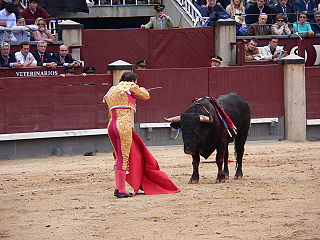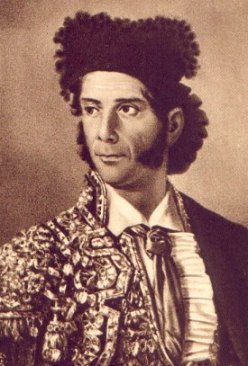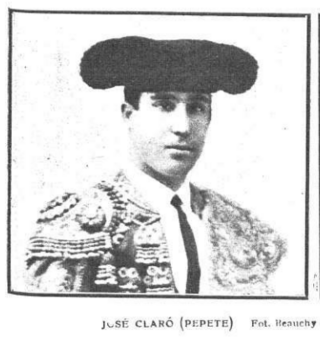
A bullring is an arena where bullfighting is performed. Bullrings are often associated with the Iberian Peninsula, but they can also be found through Iberian America and in a few Spanish and Portuguese ex-colonies in Africa. Bullrings are often historic and culturally significant centres that bear many structural similarities to the Roman amphitheatre.

The Plaza de Toros de Ronda is a Bullring in Ronda, it has a diameter of 66 metres (217 ft), surrounded by a passage formed by two rings of stone. There are two layers of seating, each with five raised rows and 136 pillars that make up 68 arches. The Royal Box has a sloping roof covered in Arabic tiles. The design of the main entrance to the bull ring features two Tuscan columns and the royal shield of Spain surround by baroque edging. The main door is large enough to allow horses and carriages to enter the ring, and above the door is an iron wrought balcony that embodies the bullfighting culture.

The Herens is a breed of cattle named after the Val d'Hérens region of Switzerland. These small, horned alpine cattle are coloured black, brown or dark red, often with a lighter stripe along the spine. The cows are used in organised cow fights.

The Plaza de toros Nuevo Progreso is a bullring in the Mexican city of Guadalajara, Jalisco. It is currently used for bull fighting and also for hosting musical events, and professional wrestling events. The bullring holds 16,561 people and was built in 1966 to 1967.

Spanish-style bullfighting is a type of bullfighting that is practiced in Spanish-speaking countries: Spain, Mexico, Colombia, Ecuador, Venezuela, Peru, as well as in parts of southern France and Portugal. This style of bullfighting involves a physical contest with humans attempting to publicly subdue, immobilize, or kill a bull. The most common bull used is the Spanish Fighting Bull, a type of cattle native to the Iberian Peninsula. This style of bullfighting is seen to be both a sport and performance art. The red colour of the cape is a matter of tradition – bulls are color blind. They attack moving objects; the brightly-colored cape is used to mask blood stains.

The course landaise is an ancient form of bullfighting and bull-leaping held in oval or rectangular arenas covered in sand, that involves no bloodshed. Experienced cows, with large horns, aged generally from 2 to 14 years old, are used instead of bulls. They are athletic but small animals selected from the same breed as the bulls used for the Spanish corridas. In Gascony, it is a major spectator sport, counting as many as 600 events each year.

Bullfighting is a physical contest that involves a bullfighter attempting to subdue, immobilize, or kill a bull, usually according to a set of rules, guidelines, or cultural expectations.
Bullfighting was banned in the Spanish autonomous community of Catalonia by a vote of the Catalan Parliament in July 2010. The ban came into effect on 1 January 2012. The last bullfight in the region took place on 25 September 2011 at La Monumental. The ban was officially annulled for being unconstitutional by Spain's highest court on 5 October 2016. However, despite the overturning of the ban, no further bullfight had taken place in Catalonia as of July 2020.

A bull is an intact adult male of the species Bos taurus (cattle). More muscular and aggressive than the females of the same species, bulls have long been an important symbol in many religions, including for sacrifices. These animals play a significant role in beef ranching, dairy farming, and a variety of sporting and cultural activities, including bullfighting and bull riding.

Museo Municipal Taurino Francisco Montes is located in Chiclana de la Frontera, in the province of Cádiz, Andalusia, southwestern Spain. Situated on San Agustín Street, the bullfighting museum is dedicated to the matador Francisco Montes Reina (1805–1851), nicknamed "Paquiro", who was born in this town. He is considered the most important 19th century bullfighter, because of his skill at the sport, on foot or on horseback. The bullfighting displays include pieces of great historical and artistic value. It was inaugurated in 2003 and founded by Pedro Leal Aragon who for seven years collected objects, souvenirs and bullfighting implements. One of its first events was a group show of the artists Antonio Vela, Carlos Quevedo, and Paloma Garcia. After a renovation, it re-opened in June 2005 with miniature models of the bullring in Ronda, a head bust of Paquiro, and an original painting by Antonio Cavanna.The expansion also housed Spain's most important bullfighting collection, Collection Sagnier, which was acquired by the city to improve the historical and artistic quality of the municipal bullfighting museum. There are four rooms: bullfighting origins, Paquiro and his time, contemporary bullfighting, and the bull and the arts. The museum's garden is used for book presentations, press conferences, weddings and small concerts. It is closed on Sundays.

Juan José Padilla is a Spanish torero ('bullfighter'). He became a matador de toros, 'killer of (full-grown) bulls', in the town of his birth, Jerez de la Frontera, on June 18, 1994 when he was 21 years old. He was known as the 'Cyclone of Jerez' and featured heavily, both personally and professionally, in Into The Arena: The World Of The Spanish Bullfight, a shortlisted nominee for the William Hill Sports Book of the Year in 2011.

The Plaza de Toros de Albacete is a bullring in the town of the Albacete, in the region of Castilla-La Mancha (Spain).

La Malagueta is a bullring at Málaga, Andalucía, Spain. It is located in the eastern district of Málaga, in its namesake neighbourhood of La Malagueta.

The Brava or Race de Combat is a French breed of domestic cattle raised in the Camargue, the delta of the Rhône in southern France. It is bred specifically for bull-fighting, either Spanish-style or Portuguese-style. It is one of two cattle breeds raised in semi-feral conditions in the Camargue: the other is the Raço di Biòu or Camargue breed, which is not a fighting breed but is used in a bloodless bull-sport, the course camarguaise. The Brava derives from Iberian fighting cattle imported in the nineteenth century, and may also be known as the Espagnole Brava.

Hilda Eliana Tenorio Patiño is a Mexican bullfighter and matador. She was the first woman to receive her alternativa in the Plaza de Toros México, the largest bullring in the world, aged 24. Tenorio completed her alternativa on February 28, 2010. She has been an outspoken advocate of feminism in the sport. She is the third Mexican woman to attain the rank of matador.
Juan José García Corral, was a Spanish bullfighter and director of the Escuela Tauromaquia of Salamanca
Pablo Lozano Martín, commonly known as La Muleta de Castilla, was a Spanish bullfighter and fighting bull cattle rancher, owner of cattle raising Alcurrucén and "Hermanos Lozano".

The Plaza de Toros de Pontevedra (Spain) is the bullring of the Spanish city of Pontevedra and the only one in the autonomous community of Galicia. It has a capacity of 7,800 spectators and is classified as the second category of Spanish bullring. The current bullring replaced a wooden one dating from 1892, although the tradition of bullfighting in Pontevedra dates back to the 17th century.

José Gallego Mateo, known as Pepete III, was a Spanish matador.
The Plaza de toros El Progreso was a bullring in the Mexican city of Guadalajara, Jalisco. It was used for bullfighting and also for hosting musical events. The venue could hold 14,000 people and was built in 1856.






















